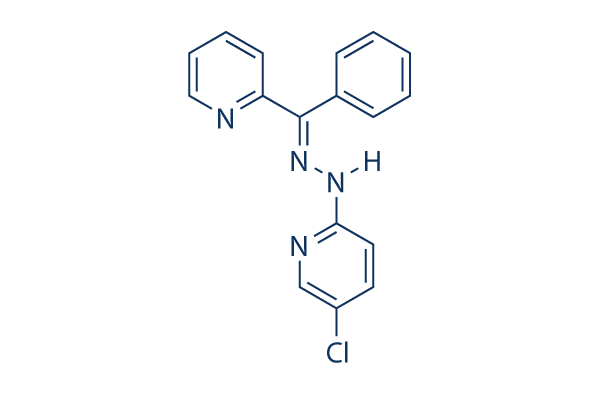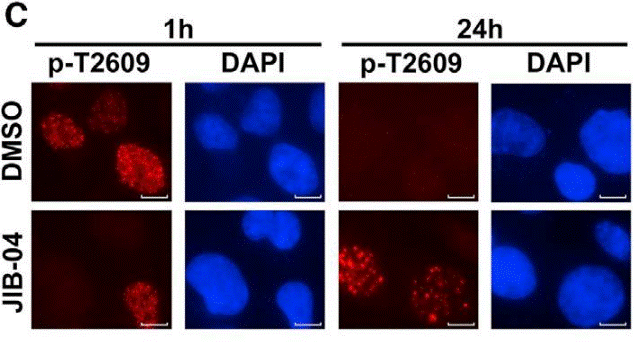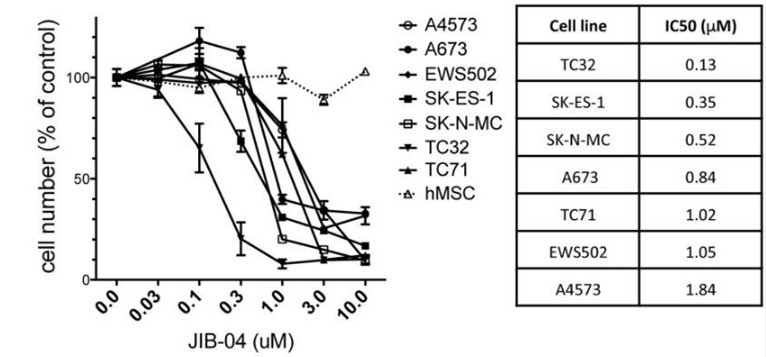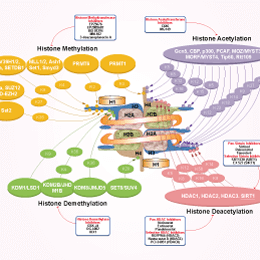
- Bioactive Compounds
- By Signaling Pathways
- PI3K/Akt/mTOR
- Epigenetics
- Methylation
- Immunology & Inflammation
- Protein Tyrosine Kinase
- Angiogenesis
- Apoptosis
- Autophagy
- ER stress & UPR
- JAK/STAT
- MAPK
- Cytoskeletal Signaling
- Cell Cycle
- TGF-beta/Smad
- DNA Damage/DNA Repair
- Compound Libraries
- Popular Compound Libraries
- Customize Library
- Clinical and FDA-approved Related
- Bioactive Compound Libraries
- Inhibitor Related
- Natural Product Related
- Metabolism Related
- Cell Death Related
- By Signaling Pathway
- By Disease
- Anti-infection and Antiviral Related
- Neuronal and Immunology Related
- Fragment and Covalent Related
- FDA-approved Drug Library
- FDA-approved & Passed Phase I Drug Library
- Preclinical/Clinical Compound Library
- Bioactive Compound Library-I
- Bioactive Compound Library-Ⅱ
- Kinase Inhibitor Library
- Express-Pick Library
- Natural Product Library
- Human Endogenous Metabolite Compound Library
- Alkaloid Compound LibraryNew
- Angiogenesis Related compound Library
- Anti-Aging Compound Library
- Anti-alzheimer Disease Compound Library
- Antibiotics compound Library
- Anti-cancer Compound Library
- Anti-cancer Compound Library-Ⅱ
- Anti-cancer Metabolism Compound Library
- Anti-Cardiovascular Disease Compound Library
- Anti-diabetic Compound Library
- Anti-infection Compound Library
- Antioxidant Compound Library
- Anti-parasitic Compound Library
- Antiviral Compound Library
- Apoptosis Compound Library
- Autophagy Compound Library
- Calcium Channel Blocker LibraryNew
- Cambridge Cancer Compound Library
- Carbohydrate Metabolism Compound LibraryNew
- Cell Cycle compound library
- CNS-Penetrant Compound Library
- Covalent Inhibitor Library
- Cytokine Inhibitor LibraryNew
- Cytoskeletal Signaling Pathway Compound Library
- DNA Damage/DNA Repair compound Library
- Drug-like Compound Library
- Endoplasmic Reticulum Stress Compound Library
- Epigenetics Compound Library
- Exosome Secretion Related Compound LibraryNew
- FDA-approved Anticancer Drug LibraryNew
- Ferroptosis Compound Library
- Flavonoid Compound Library
- Fragment Library
- Glutamine Metabolism Compound Library
- Glycolysis Compound Library
- GPCR Compound Library
- Gut Microbial Metabolite Library
- HIF-1 Signaling Pathway Compound Library
- Highly Selective Inhibitor Library
- Histone modification compound library
- HTS Library for Drug Discovery
- Human Hormone Related Compound LibraryNew
- Human Transcription Factor Compound LibraryNew
- Immunology/Inflammation Compound Library
- Inhibitor Library
- Ion Channel Ligand Library
- JAK/STAT compound library
- Lipid Metabolism Compound LibraryNew
- Macrocyclic Compound Library
- MAPK Inhibitor Library
- Medicine Food Homology Compound Library
- Metabolism Compound Library
- Methylation Compound Library
- Mouse Metabolite Compound LibraryNew
- Natural Organic Compound Library
- Neuronal Signaling Compound Library
- NF-κB Signaling Compound Library
- Nucleoside Analogue Library
- Obesity Compound Library
- Oxidative Stress Compound LibraryNew
- Plant Extract Library
- Phenotypic Screening Library
- PI3K/Akt Inhibitor Library
- Protease Inhibitor Library
- Protein-protein Interaction Inhibitor Library
- Pyroptosis Compound Library
- Small Molecule Immuno-Oncology Compound Library
- Mitochondria-Targeted Compound LibraryNew
- Stem Cell Differentiation Compound LibraryNew
- Stem Cell Signaling Compound Library
- Natural Phenol Compound LibraryNew
- Natural Terpenoid Compound LibraryNew
- TGF-beta/Smad compound library
- Traditional Chinese Medicine Library
- Tyrosine Kinase Inhibitor Library
- Ubiquitination Compound Library
-
Cherry Picking
You can personalize your library with chemicals from within Selleck's inventory. Build the right library for your research endeavors by choosing from compounds in all of our available libraries.
Please contact us at [email protected] to customize your library.
You could select:
- Antibodies
- Bioreagents
- qPCR
- 2x SYBR Green qPCR Master Mix
- 2x SYBR Green qPCR Master Mix(Low ROX)
- 2x SYBR Green qPCR Master Mix(High ROX)
- Protein Assay
- Protein A/G Magnetic Beads for IP
- Anti-Flag magnetic beads
- Anti-Flag Affinity Gel
- Anti-Myc magnetic beads
- Anti-HA magnetic beads
- Magnetic Separator
- Poly DYKDDDDK Tag Peptide lyophilized powder
- Protease Inhibitor Cocktail
- Protease Inhibitor Cocktail (EDTA-Free, 100X in DMSO)
- Phosphatase Inhibitor Cocktail (2 Tubes, 100X)
- Cell Biology
- Cell Counting Kit-8 (CCK-8)
- Animal Experiment
- Mouse Direct PCR Kit (For Genotyping)
- New Products
- Contact Us
JIB-04
Synonyms: NSC 693627
JIB-04 (NSC 693627) is a pan-selective Jumonji histone demethylase inhibitor with IC50 of 230, 340, 855, 445, 435, 1100, and 290 nM for JARID1A, JMJD2E, JMJD3, JMJD2A, JMJD2B, JMJD2C, and JMJD2D in cell-free assays, respectively. JIB‑04 also induces cell apoptosis.

JIB-04 Chemical Structure
CAS No. 199596-05-9
Purity & Quality Control
Batch:
Purity:
99.80%
99.80
JIB-04 Related Products
| Related Targets | KDM1 KDM2 KDM3 KDM4 KDM5 KDM6 | Click to Expand |
|---|---|---|
| Related Products | GSK J4 HCl SP2509 CPI-455 HCl Iadademstat (ORY-1001) 2HCl GSK-LSD1 2HCl OG-L002 ML324 IOX1 GSK J1 CP2 CPI-455 | Click to Expand |
| Related Compound Libraries | Kinase Inhibitor Library FDA-approved Drug Library Natural Product Library Bioactive Compound Library-I Highly Selective Inhibitor Library | Click to Expand |
Signaling Pathway
Biological Activity
| Description | JIB-04 (NSC 693627) is a pan-selective Jumonji histone demethylase inhibitor with IC50 of 230, 340, 855, 445, 435, 1100, and 290 nM for JARID1A, JMJD2E, JMJD3, JMJD2A, JMJD2B, JMJD2C, and JMJD2D in cell-free assays, respectively. JIB‑04 also induces cell apoptosis. | |||||||||||
|---|---|---|---|---|---|---|---|---|---|---|---|---|
| Targets |
|
| In vitro | ||||
| In vitro | JIB-04 induces transcriptional changes in a cancer-selective manner, including the downregulation of proliferative genes and the upregulation of the anti-proliferative/pro-apoptotic genes. JIB-04 blocks growth of lung and prostate cancer lines with IC50 as low as 10 nM, while produces less anti-proliferative activities on HBECs and PrSCs/PrECs. [1] | |||
|---|---|---|---|---|
| Kinase Assay | Jumonji demethylase/prolyl hydroxylase/LSD1 activity assays | |||
| Active JMJD2E aa 1-350 is purified from E.coli and used in vitro in the presence of α-ketoglutarate, 5-10 μM iron, ascorbic acid and a histone peptide substrate in a coupled reaction with formaldehyde dehydrogenase supplemented with NAD+ to quantify NADH production or using Epigentek kit P-3081. For histone demethylation reactions quantified by Western analysis, a His-tagged hJMJ2D aa 1-350 expression construct, the kind gift of Drs. Y. Shi and J. Whetstine, is expressed and purified from E.coli following the Qiagen Ni-NTA agarose manual instructions and the protocol of Whestine et al 54. Briefly, protein is eluted in 50 mM TrisHCl pH 7.8 + 0.3 M NaCl + 10% Glycerol + 200 mM immidazol, and dialyzed against 20 mM TrisHCl pH 7.4, 0.15 M NaCl, 0.2 mM PMSF, 0.5 mM DTT, 8% glycerol. Enzyme is aliquoted, flash frozen and stored at -80°C. For activity assays by Western blot, ~1.5 μg of enzyme are combined with 0.3 μg H3K9me3 substrate (Active Motif #31213) in 10 μM (NH4)2Fe(SO4)2, 1 mM α-ketoglutarate, and 2 mM sodium L-ascorbate in 50 mM Hepes pH 7.9 in the presence of vehicle or drug and incubated for 30 min-2 hrs at 37°C. SDS loading buffer is added to the reactions, and after boiling, samples are run on NuPage 4-12% Bis-Tris gels, transferred to nitrocellulose and blotted using Upstate #07-523 to detect H3K9me3. For the detection of H3 total signal, we uses Active Motif #39763 (primary) and IRDye 680 conjugated donkey anti-rabbit IgG (secondary, LI-COR # 926-32223) and imaged blots in an Odyssey Infrared Imaging system kindly made available by Dr. M. Cobb. For in vitro IC50 determinations and competition studies, typically 100-200 ng of purified protein are incubated with vehicle, JIB-04 or analogs, as indicated in figure legends and activity measured by ELISA (Epigentek kit P-3081 for H3K9me3 demethylation, P-3083 for H3K4me3 demethylation, and P-3085 for H3K27me3 demethylation) in reactions containing 50mM Hepes pH 7.5, 0.01% Tween 20, 120nM (NH4)2Fe(SO4)2, 1 mM α-ketoglutarate, 2 mM sodium L-ascorbate and 50ng peptide substrate. Final enzyme concentrations in the reactions were as follows: 206 nM JMJD2A, 12 nM JMJD2B, 60 nM JMJD2C, 90 nM JMJD2D E.coli, 30 nM JMJD2D Sf9, 30 nM JMJD2E, 30 nM Jarid1a, 35 nM JMJD3. Background readings are given by heat inactivated enzymes, 0.5-1 mM 2,4 PDCA or reactions with no 2-OG. hJMJD2A (aa1-350) purified in E.coli is the kind gift of Dr. Jose Rizo-Rey and is assayed at 400 ng/reaction due to its intrinsic low activity. GraphPad Prism software is used for IC50 calculations and curve fitting. E.coli JMJD2D purified by us and Sf9 JMJD2D from BPS gave undistinguishable results. Note that for substrate competition assays, in order to remain in the linear range of the assay and not saturate binding capacity of the ELISA plate, reactions with > 0.75μM H3K9me3 containes unbiotinylated substrate or are diluted at the detection step and signals adjusted per dilution factor. For the direct quantification of H3K9me3 demethylase activity in cell lysates, treated cells (plated at 2 million/10cm dish) or tumor homogenates in PBS were sonicated (3x 4 sec) and equal amounts of protein are incubated with a histone H3K9me3 substrate in a reaction buffer containing cofactors for 2h at 37°C before specific immune-detection of the H3K9me2 product using Epigentek kit P-3081 reagents. 500 ng of E.coli purified PHD2 protein in 40mM Tris pH 7.4, 100mM NaCl, 20% glycerol, 5mM β-mercapto-ethanol, 10mM maltose are used to obtain activity in the linear range. Biotinylated peptides derived from the HIF-1 ODD (Biotin-Acp-DLDLEALAPYIPADDDFQL or Biotin-Acp-DLDLEALAP(OH)YIPADDDFQL as a hydroxylated control) are immobilized on Neutravidin-coated 96-well plates. Enzyme is incubated in the coated wells in reaction buffer (20 mM Tris-Cl pH 7.5, 5 mM KCl, 1.5 mM MgCl2, 2 mM DTT, 0.12 μM ferrous sulfate, 0.5 mM 2-oxoglutarate and 1 mM ascorbate) for 45 min at room temperature in the presence of the indicated drugs. The competitive analog of α-ketoglutarate, DMOG, is used as a positive control for inhibition. Peptide hydroxylation is detected using a polyclonal rabbit antibody raised against a hydroxylated HIF peptide epitope, (rabbit anti-hydroxyproline 4817, made in house), followed by addition of a goat anti-rabbit HRP-conjugated secondary antibody. Luminescence is measured in an EnVision plate reader. The activity of LSD1 recombinant protein is measured using Epigentek kit P-3075 according to the manufacturer’s protocol with the proprietary inhibitor. | ||||
| Cell Research | Cell lines | Human lung cancer cell lines (LCa), primary or immortalized non-tumorigenic HBECs, prostate cancer (PCa), primary prostate stromal (PrSC) and prostate epithelial cells (PrEC). | ||
| Concentrations | ~10 μM | |||
| Incubation Time | 96 hours | |||
| Method | For cell viability assays, cells are plated at 1500-3000 cells/well in 96 well plates and treated the next day with increasing doses of compound over 4 days and their viability assessed by standard MTS assays using Promega’s Cell Titer or Cell Titer-Glo reagents according to the manufacturer’s protocols. Absorbance at 490 nm and 650 nm or luminescence is measured by a Spectra Max or a FlouroStar Omega plate reader. Data are normalized to the untreated controls (100% viability). Each cell line is tested in 2-5 independent assays, each containing 4-8 replicates. IC50 values are calculated using DIVISA, a high-throughput software, developed in hous, for storing and analyzing drug sensitivity assays. Dose-response curves are plotted using a non-linear regression model and IC50s are determined from the fitted curves. The average IC50 derived from 2-5 independent assays, each containing 4-8 replicates is reported. |
|||
| Experimental Result Images | Methods | Biomarkers | Images | PMID |
| Western blot | H3K9me2 / H3K9me3 / H3K27me3 / H3K4me3 / TIMP1 / ANP αCD133 |

|
30531796 | |
| Immunofluorescence | DNA-PKcs |

|
30355483 | |
| Growth inhibition assay | Cell viability |

|
30237855 | |
| In Vivo | ||
| In vivo | In two separate xenograft mouse models (H358 or A549), JIB-04 diminishes tumor growth, lowers Jumonji histone demethylase activity in tumors, and prolongs cancer survival. [1] | |
|---|---|---|
| Animal Research | Animal Models | Mice harboring H358 xenografts or A549 xenografts |
| Dosages | 110 mg/kg (H358, i.p.), 55 mg/kg (A549, Oral gavage) | |
| Administration | Oral gavage or i.p. | |
Chemical Information & Solubility
| Molecular Weight | 308.76 | Formula | C17H13ClN4 |
| CAS No. | 199596-05-9 | SDF | Download JIB-04 SDF |
| Smiles | C1=CC=C(C=C1)C(=NNC2=NC=C(C=C2)Cl)C3=CC=CC=N3 | ||
| Storage (From the date of receipt) | |||
|
In vitro |
DMSO : 62 mg/mL ( (200.8 mM) Moisture-absorbing DMSO reduces solubility. Please use fresh DMSO.) Water : Insoluble Ethanol : Insoluble |
Molecular Weight Calculator |
|
In vivo Add solvents to the product individually and in order. |
In vivo Formulation Calculator |
||||
Preparing Stock Solutions
Molarity Calculator
In vivo Formulation Calculator (Clear solution)
Step 1: Enter information below (Recommended: An additional animal making an allowance for loss during the experiment)
mg/kg
g
μL
Step 2: Enter the in vivo formulation (This is only the calculator, not formulation. Please contact us first if there is no in vivo formulation at the solubility Section.)
% DMSO
%
% Tween 80
% ddH2O
%DMSO
%
Calculation results:
Working concentration: mg/ml;
Method for preparing DMSO master liquid: mg drug pre-dissolved in μL DMSO ( Master liquid concentration mg/mL, Please contact us first if the concentration exceeds the DMSO solubility of the batch of drug. )
Method for preparing in vivo formulation: Take μL DMSO master liquid, next addμL PEG300, mix and clarify, next addμL Tween 80, mix and clarify, next add μL ddH2O, mix and clarify.
Method for preparing in vivo formulation: Take μL DMSO master liquid, next add μL Corn oil, mix and clarify.
Note: 1. Please make sure the liquid is clear before adding the next solvent.
2. Be sure to add the solvent(s) in order. You must ensure that the solution obtained, in the previous addition, is a clear solution before proceeding to add the next solvent. Physical methods such
as vortex, ultrasound or hot water bath can be used to aid dissolving.
Tech Support
Answers to questions you may have can be found in the inhibitor handling instructions. Topics include how to prepare stock solutions, how to store inhibitors, and issues that need special attention for cell-based assays and animal experiments.
Tel: +1-832-582-8158 Ext:3
If you have any other enquiries, please leave a message.
* Indicates a Required Field
Frequently Asked Questions
Question 1:
Do you have any suggestion for in vivo study please? (Cat. S7281, via injection)
Answer:
For IP or sub cutaneous injection, The compound is soluble in 4% DMSO+30% PEG 300+5% Tween 80+ddH2O at 3 mg/ml. But when water added, it turned yellowish green immediately. We are not sure if the compound was still fine in this vehicle. So we tried to use oil. 3mg of this compound dissolves in 40ul of DMSO clearly, and it can be dilute with corn oil at any proportion.
Tags: buy JIB-04 | JIB-04 supplier | purchase JIB-04 | JIB-04 cost | JIB-04 manufacturer | order JIB-04 | JIB-04 distributor







































